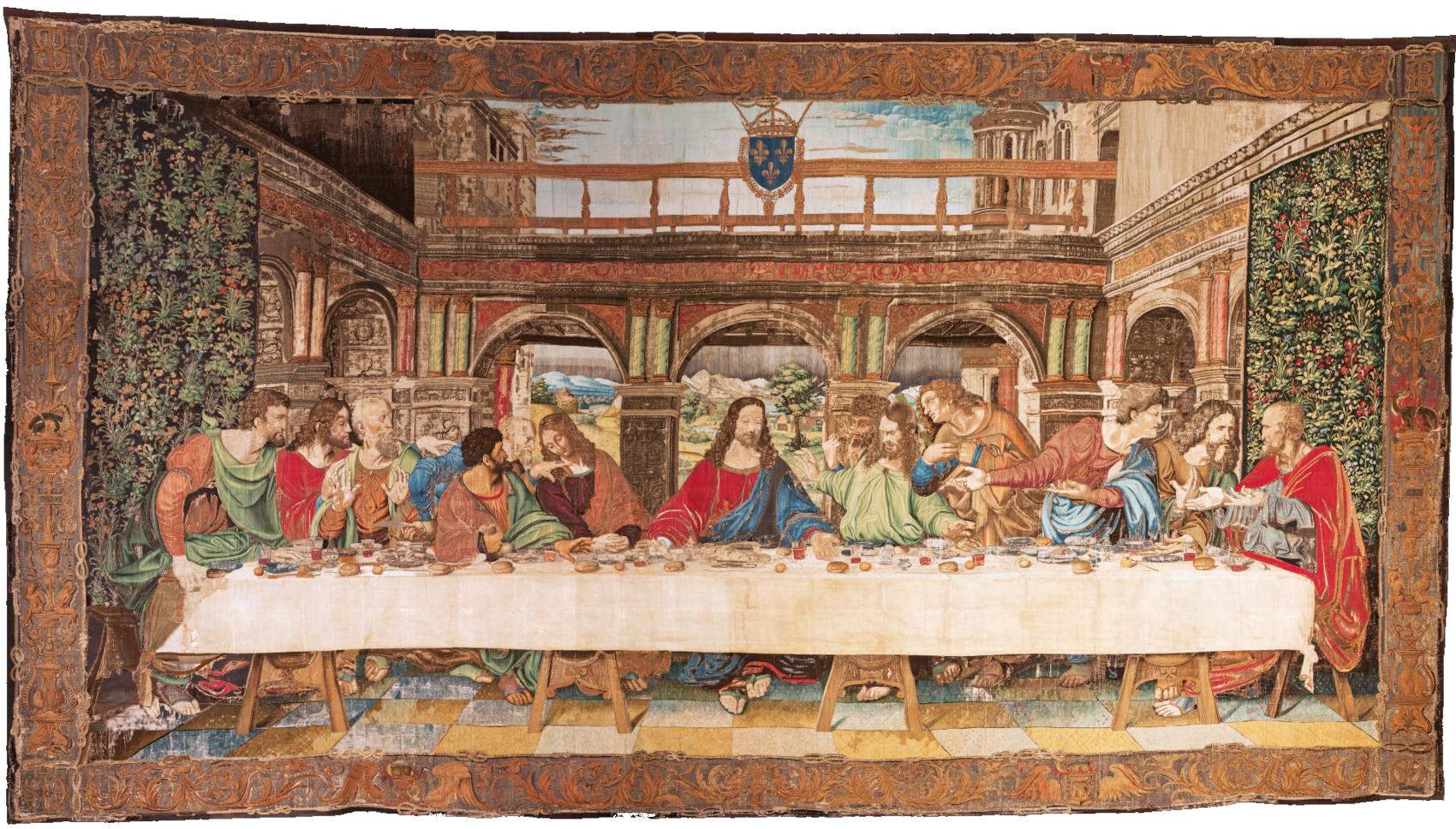Turin, the exhibition of tapestries at the court of the popes at the Reggia di Venaria
The Reggia di Venaria opens the new season with the exhibition In the Shadow of Leonardo. Tapestries and Ceremonies at the Court of the Popes, curated by Alessandra Rodolfo and Andrea Merlotti, scheduled from March 21 to June 18, 2023 at the Sale delle Arti. The exhibition is organized by the Consortium of the Royal Residences of Savoy with the important participation of the Vatican Museums and brings together works from not only the Vatican Museums themselves but also the Museum of Rome, the Royal Museums of Turin, the Museo Diocesano Tridentino, the Civica Raccolta delle Stampe A. Bertarelli of Milan and from various private collections.
This is an opportunity to take a journey inside some of the most important papal ceremonies: the Washing of the Feet and the Coena Domini, which took place on Holy Thursday in the heart of the Vatican Palace, in solemn rooms embellished with extraordinary works of art, linked to names such as Leonardo and Raphael. Capturing the meaning of ancient ceremonies, rich in symbols and meaning, tapestries, paintings, engravings and objects tell a story rooted far back in time, immersing visitors in a world of traditions and ancient rites. Not just external acts, but important testimonies of the Roman Church.
The story being told began in 1533 when, on the occasion of the marriage of Catherine de’ Medici, niece of Pope Clement VII, and Henry of Valois, second son of the King of France Francis I, the latter gave the pontiff a precious tapestry depicting Leonardo’s Last Supper. An important marriage and gift that sealed the alliance between France and the Papacy against Emperor Charles V (who was responsible for the sack of Rome only six years earlier in 1527). The work was made after 1516 by order of Francis I himself and his mother Louise of Savoy. This explains the presence of Savoy symbols all along the tapestry’s border. In the precious cloth, woven entirely in gold and silk, the Milanese Last Supper is transposed with absolute fidelity, but with an important variation. The background, which in the original is almost an abstraction, becomes Renaissance architecture: as if the Last Supper were taking place at the French court. Francis I was such a great admirer of Leonardo that he called him to his court, and it is now widely believed that the cartoon for the tapestry, on which the later weaving was done, was made in France under the supervision of Leonardo himself.
When they had it in their collections, the pontiffs decided to use the tapestry for some of the most important and evocative religious ceremonies of the papal court. In particular in the Washing of the Feet that took place in the Ducal Hall of the Vatican Palace and on the occasion of which the pontiff, in imitation of Christ, washed the feet of thirteen poor priests (twelve represented the apostles, one perhaps Christ himself) seated on a stage under the Leonardesque tapestry. The pontiff himself then, assisted by his retinue, served dinner (Coena Domini) to the thirteen with clear reference to theLast Supper.
Here Leonardesque cloth intertwined its history with another tapestry, of great prominence and beauty: that for the papal baldachin dossal, also made for Clement VII, an avid collector of textiles. It had been designed for him by Raphael’s pupils, the same ones who had worked with the master in the celebrated Vatican Rooms and the palace’s Loggias. Forty years after its last display, the imposing canopy, made in the same Brussels manufactory from which Raphael’s famous Sistine Chapel tapestries came, will be reconstructed in the exhibition, fitted with its cover embellished by its extraordinarily beautiful pendants.
At the beginning of the ceremony of the Washing of the Feet, the pontiff would rise from his throne, under Raphael’s canopy, and walk under the Leonardesque tapestry, in the shadow of which he washed the feet of the poor. Although generally the solemn rite of the lavender took place in the Vatican Palace and later in St. Peter’s Basilica, at least once (in 1831) it also took place at the Quirinale, formerly the Papal Palace. A story remembered indirectly with the large tapestry depicting Jesus washing the feet of the Apostles. Donated by Napoleon to Pope Pius VII, the fine cloth, made in Paris at the famous Gobelins Manufacture, is still on display today in the Carracci Rooms of the Italian presidential palace. The rite of Lavender was not, however, a papal prerogative. All Catholic rulers, and until the late 17th century even the Protestant king of England in imitation of the papal court, practiced it for many centuries, in some cases until less than a century ago. A history also recalled in the exhibition by a splendid aiguiere used by Charles Felix and Charles Albert of Savoy, now in the storerooms of the Royal Museums of Turin.
It is associated with two other splendid jugs from the Papal Sacristy, probably used for the same purpose.
The exhibition catalog is published by Silvana Editoriale.
Full ticket €10; reduced €8; reduced children €6; reduced schools €3.
For more information, free, reduced and purchase tickets: lavenaria.it
 |
| Turin, the exhibition of tapestries at the court of the popes at the Reggia di Venaria |
Warning: the translation into English of the original Italian article was created using automatic tools. We undertake to review all articles, but we do not guarantee the total absence of inaccuracies in the translation due to the program. You can find the original by clicking on the ITA button. If you find any mistake,please contact us.




























